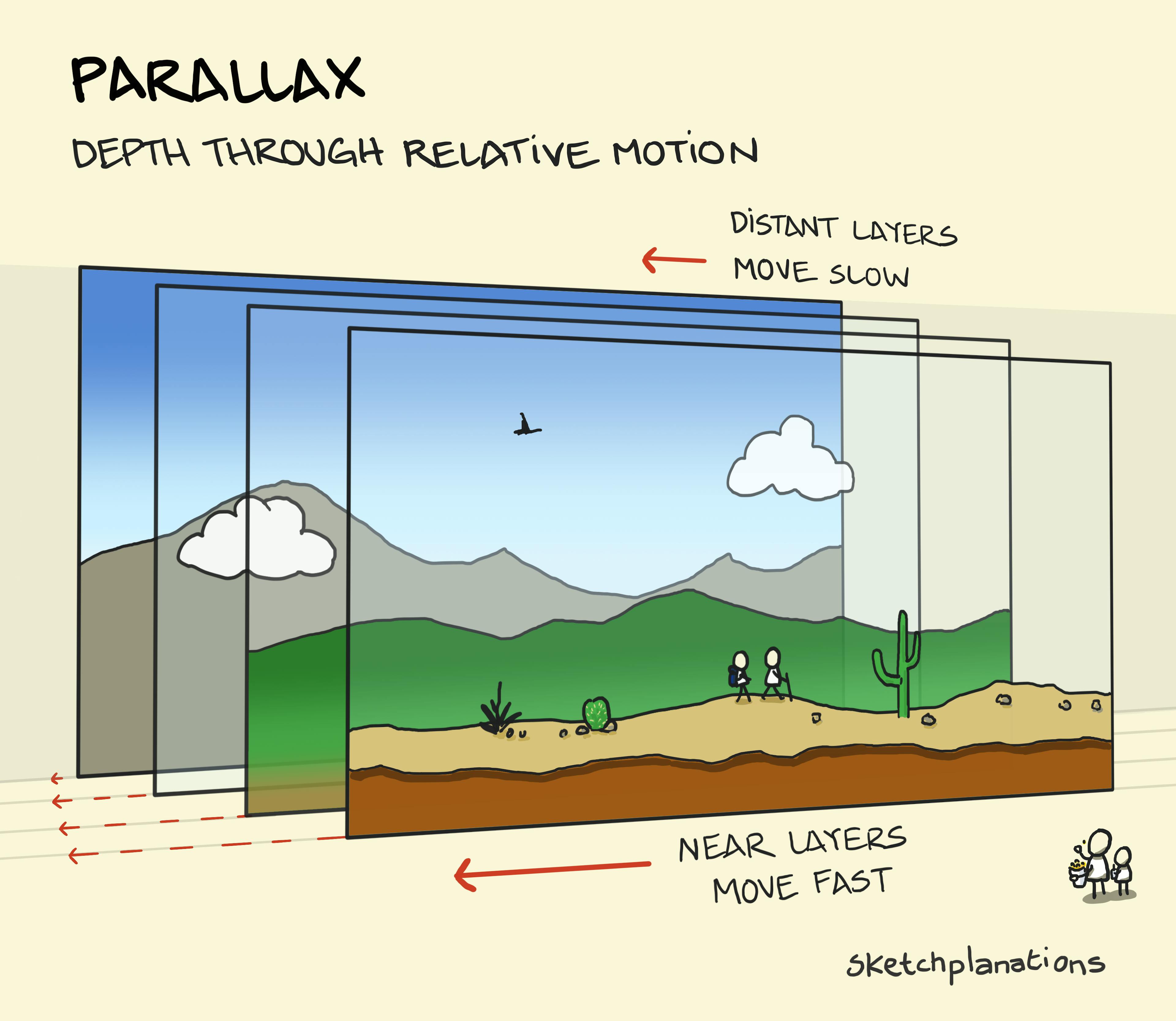Parallax

- Prints
- Copied!
👇 Get new sketches each week
Parallax is the change in the apparent position of objects from different viewpoints. For example, from one viewpoint, a nearby house may appear in front of a hill, and from another, it may be in front of a lake. Objects at different distances appear to move by different amounts. As you move between viewpoints, say when driving along a road, nearby objects move past you quickly, while distant objects appear to move by slowly. This difference in motion from near to far objects helps us determine how far objects are away.
I remember learning parallax from video games, like playing Sonic the Hedgehog on the old Sega Mega Drive . As the character moves in the foreground, elements at different distances in the background move progressively slower, creating a sense of depth. Saturation and contrast change at with distance also, known as atmospheric perspective.
I also enjoy observing parallax while looking out of a train window; nearby hedges and trees race by, buildings in the middle distance move more slowly, and distant hills or mountains barely seem to change. It's fascinating how our brains interpret this relative movement to judge distances.
One of the more intriguing applications of parallax is stellar parallax in astronomy. The basic geometry of parallax allows us to measure the distance of (relatively) nearby stars by observing relative shifts against the background of distant stars. Here's how it works: we observe the stars from different points in our orbit around the Sun. As a result, the stars appear to move relative to each other. By measuring this apparent shift, we can calculate the distance of the stars.
Also see:

